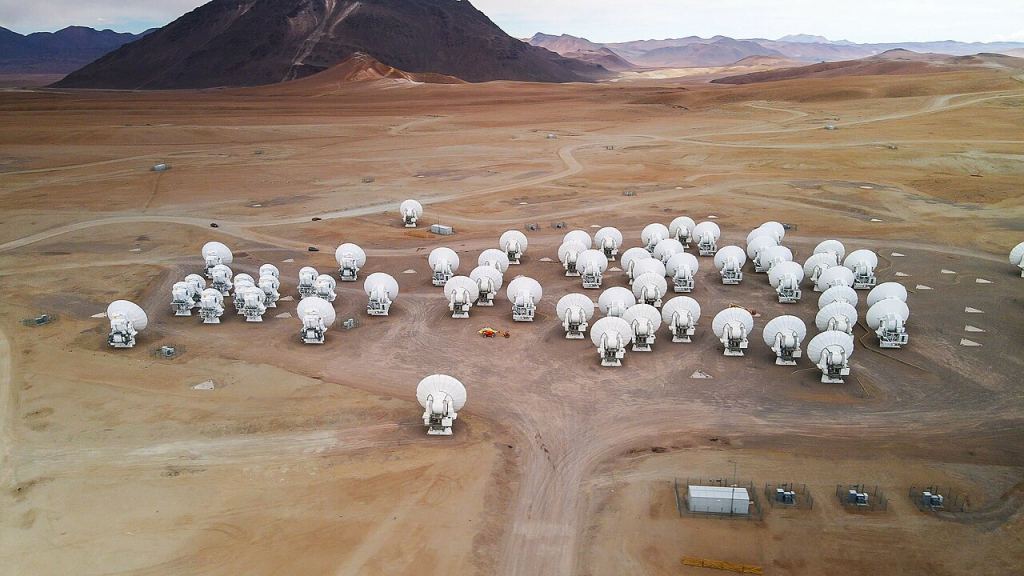To those familiar with optical telescopes, the idea of doing something to achieve higher resolution with their telescope may seem alien, if not, then practically impossible. A telescopes resolution is determined by among other things, its aperture – diameter of the thing that collects light (or electromagnetic radiation) and of course you can’t easily change that. Enter the team at ALMA, the Atacama Large Millimeter Array who have become the first to use the Band 10 receiver and extreme separation of the receivers to boosting its resolution so they can see detail equivalent of detecting a 10 meter long bus on the Moon!
The Atacama Large Millimeter/submillimeter Array (otherwise known as ALMA) is based upon interferometer technology which, in its simplest terms, takes a number of telescopes, hooks them together and gives them the same amount of resolution as if the instrument was the same diameter as the distance between the component parts! If that blew your mind then let me explain; think of having one 20cm telescope in my home city of Norwich in United Kingdom and another in New York in the USA. Individually the telescopes are 20cm diameter and have resolution based on that but their separation is 5,263km and if you manage to hook them together as an interferometer then together, they would yield a resolution equivalent to a telescope with a diameter of 5,263km! Somewhat better than if they operated individually.

ALMA is not an optical telescope though, it is radio telescope array of 66 individual instruments either 12m or 7m in diameter and can stretch out across the Atacama desert with over 16km between receivers. The system is a wonderful international partnership between the United States, Europe, Canada, Japan, Taiwan, South Korea and Chile and cost about $1.4 billion USD to install. The receivers were installed in the first few years of the 21st Century and it became operational in 2011, operating at an altitude of 5,000m. They operate in the millimeter and submillimeter wavelengths meaning they can pierce through molecular dust clouds and study the furthest reaches of the Cosmos.
A team from the Joint ALMA Observatory in Chile, the National Astronomical Observatory in Japan, National Radio Astronomy Observatory in USA and European Southern Observatory have recently pushed the array to its limits. How can a telescope increase resolution? Make its collecting area bigger and in the case of an interferometer, increase the separation between the receivers and that’s just what the team did by extending the separation of the receivers to their maximum. They were also able to use the Band 10 receivers giving ALMA the ability to reach frequencies as high as 950 GHz, the highest it can achieve.
The Band 10 receivers are not particularly new though, they have been available at ALMA since 2014 but have not been used before. The team needed to use a relatively new technique called band to band calibration which involves cancelling out fluctuations from the atmosphere through observing a calibration object in low frequency waves while the target object is observed in high frequency. They used the technique to successfully observe R Leporis, a star in the Milky Way with the results having just been being published in the Asrophysical Journal in a paper called “ALMA High Frequency Long Baseline Campaign 2021: Highest Angular Resolution Submillimeter Wave Images for the Carbon-Rich Star R Lep”.

